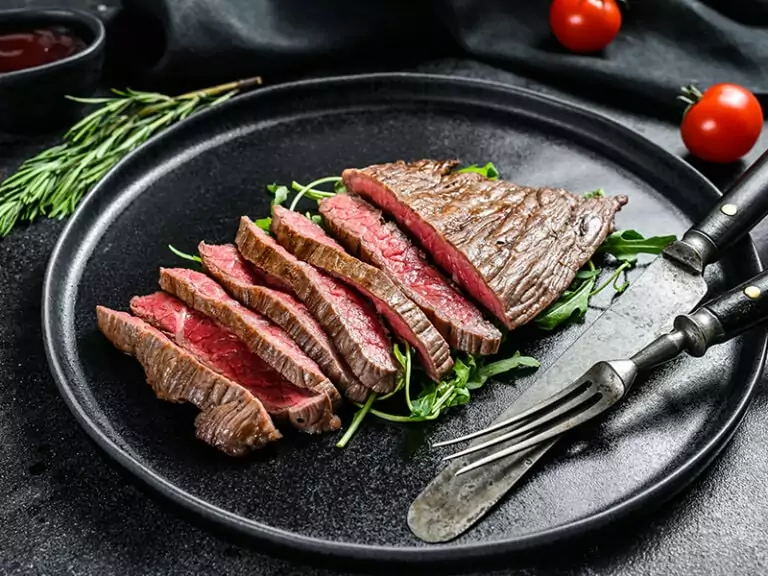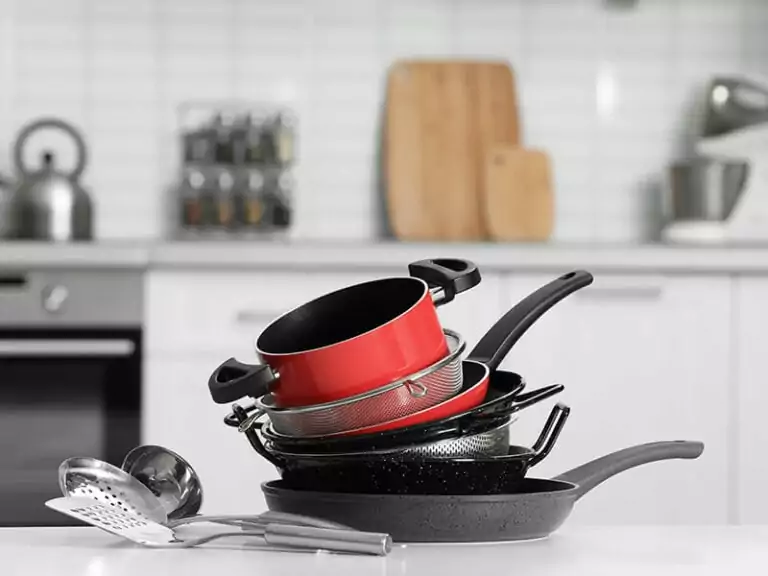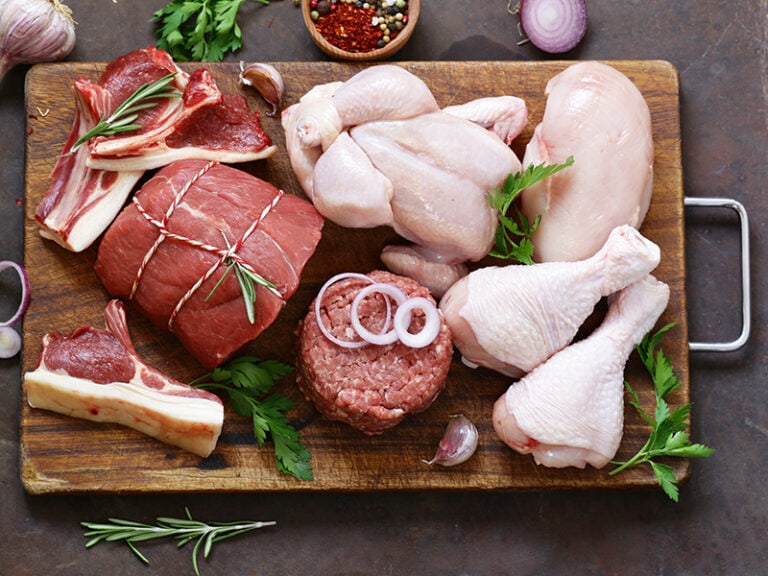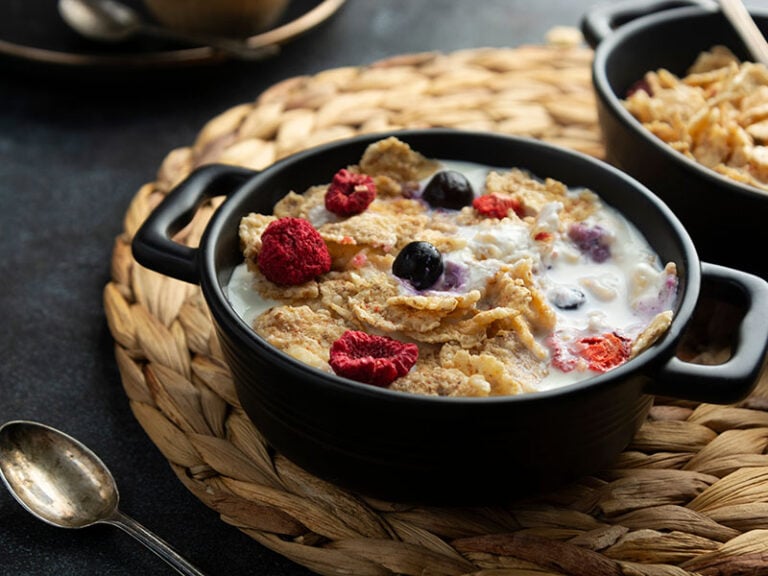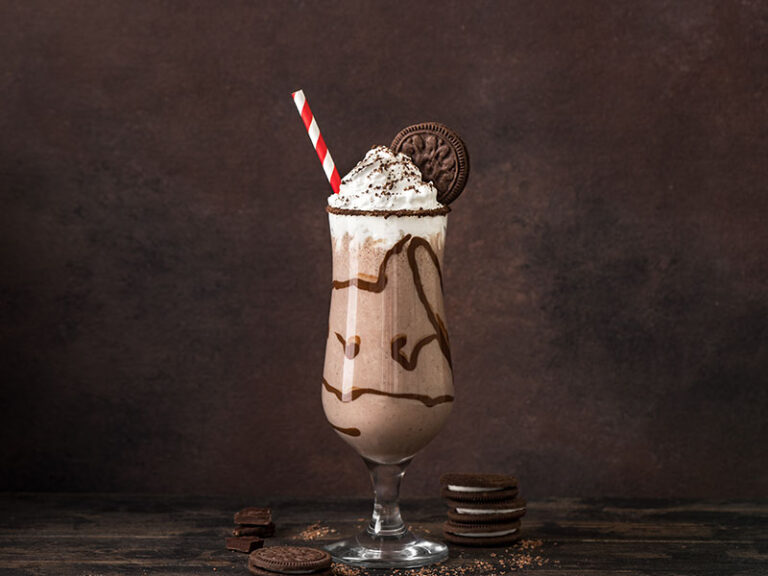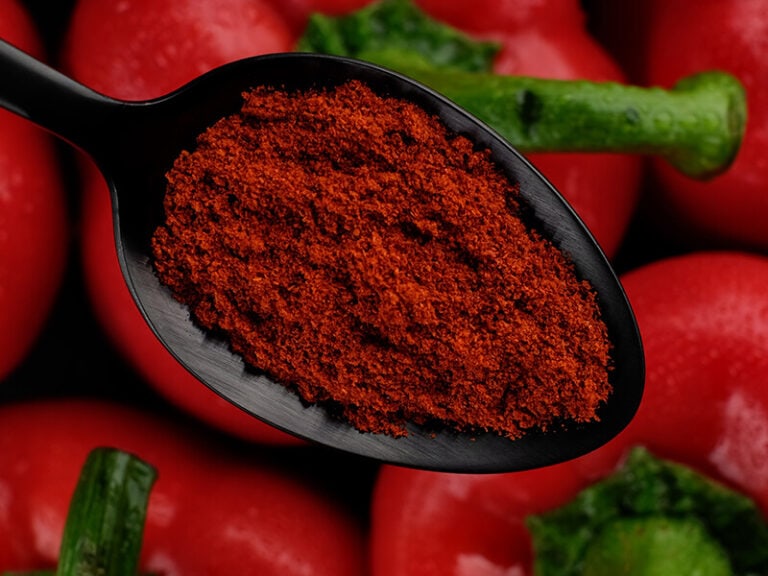Medium vs. medium-rare: is there any difference between these two doneness levels? If you order a steak in a BBQ restaurant, chances are the server will ask if you prefer a medium or medium-rare steak.
Though they both indicate rare steak doneness, each category delivers a unique flavor and texture that target different tastes. I will compare and discuss the qualities of these two steak doneness levels in detail to help you pick the best option.
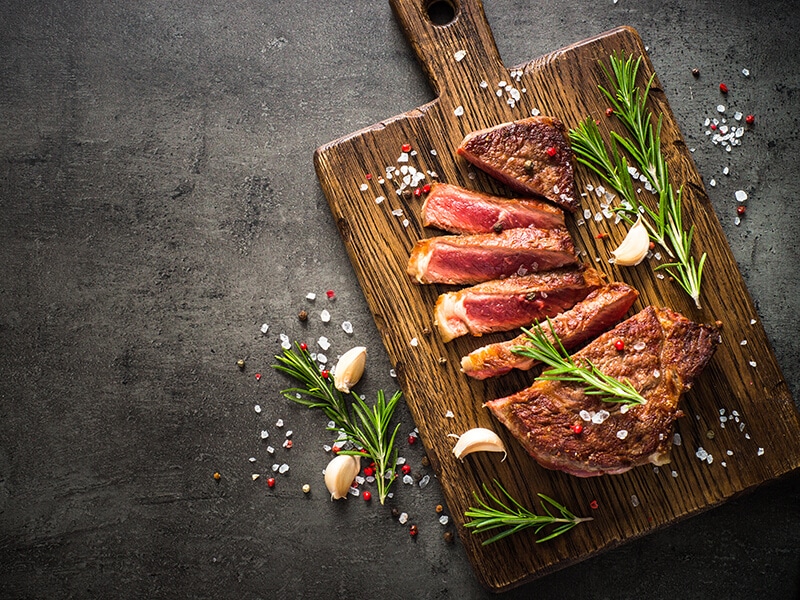
Have You Known All The Levels Of Steak Doneness?
Medium and medium-rare are two excellent examples of the six steak doneness levels. Besides these two terms, steak doneness is also divided into blue-rare, rare, medium-well, and well-done.
As you can guess, these levels indicate the different textures of meat when cooked at a specific temperature and time duration. Each type delivers a unique combination of firmness, look, and flavors that make up its reputation.
Before dwelling on the in-depth details of medium and medium-rare steaks, it would help to walk through the core features of the six steak doneness level.
Blue Rare
Blue rare is the rarest way you can cook a steak. It is dark purple, and the inside is barely warm. Since the steak is only seared briefly on the two sides, its inner meat is basically raw.
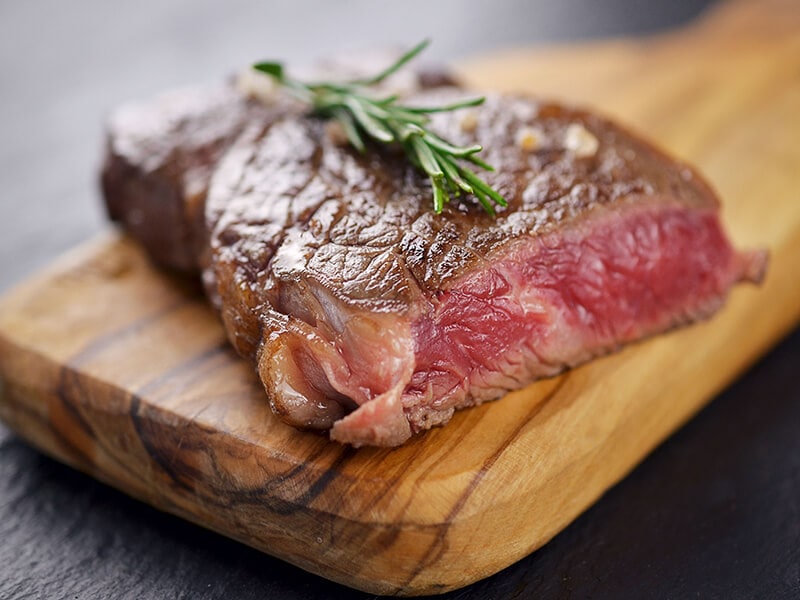
Rare
The inner texture of rare steak is a little warmer than blue rare, but it still looks raw with a pinkish or reddish color in the center. Rare steak is typically soft and juicy with slightly charred edges.
People often use lean and beefy cuts to make rare steak because the low temperature is insufficient to melt their fat. The cooked rare steaks also give a reddish liquid running on its texture.
Many people mistake this liquid for raw blood, but it’s not the case. The reddish color of rare steaks is not blood but a mixture of water and myoglobin (a protein generated from the cow’s muscle fibers).
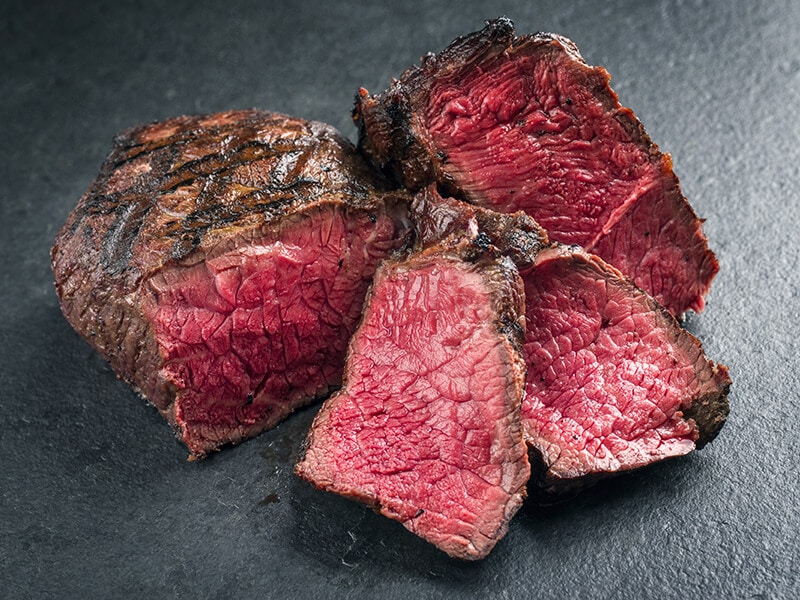
Medium-Rare
Slice through a cooked medium-rare steak, and you’ll see pinky colors with some hints of redness. 125ºF to 130ºF is hot enough to melt the meat fat, giving it a more juicy and tender texture than rare steaks. For this reason, medium-rare is a favorite choice of many diners.
A medium-rare steak feels soft, juicy, and tender in the center, while the outer sides are firm. While the inner texture retains the beefy juice, a medium-rare steak feels firmer to touch on the outside than rare steaks.
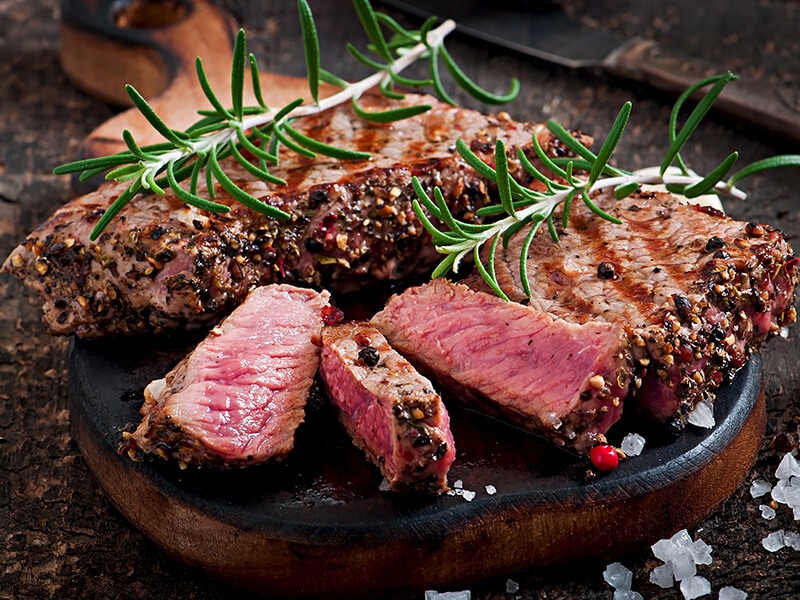
Medium
Medium steak is another prevalent option with a dark, shear brown (sometimes brownish-gray) outer texture covering its pinky center. This level meets the internal cooking temperature recommended by the USDA.
Unlike rare steaks, a medium steak is a little resistive when you press its texture. There is no dark or reddish spot in its center, and the whole steak is completely warm. The meat is drier than the other doneness levels, and its juice won’t run all over your plate.
However, the cooking time is still not long enough for the heat to cook its entire inner texture. Still, medium is a recommended choice for diners concerned about meat safety of undercooked meat.
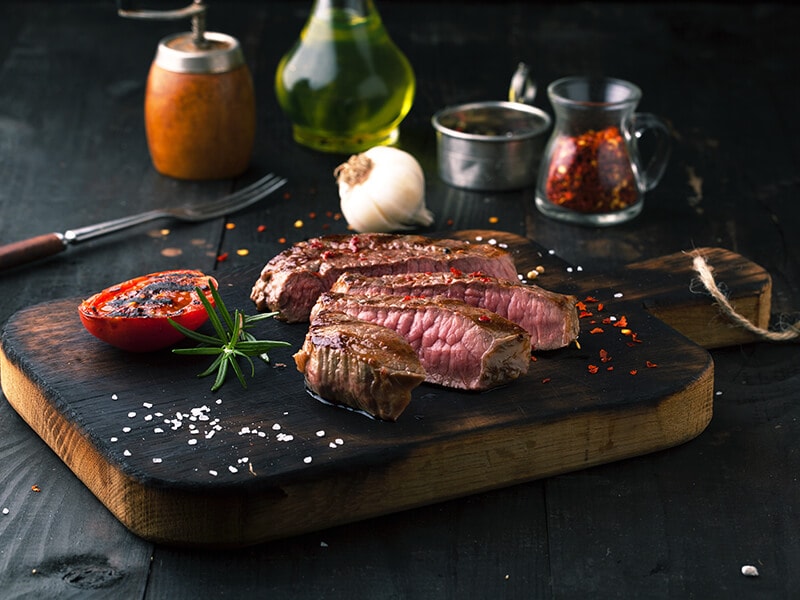
Medium-Well
The internal texture of a medium-well steak is mostly brown and completely safe to eat. Under higher heat, the meat’s juice has evaporated significantly, delivering a chewy, dry, and firmer texture.
If you prefer a safe and blood-free steak with a juicy texture, medium-well is a perfect choice. Though its outer sides are firm, the meat’s center is still juicy and soft with some slightly pink strips.
An authentic and properly cooked medium-well steak will have a brownish-gray color due to the longer cooking time. This steak is often served with sauces to achieve the most satisfying flavors.
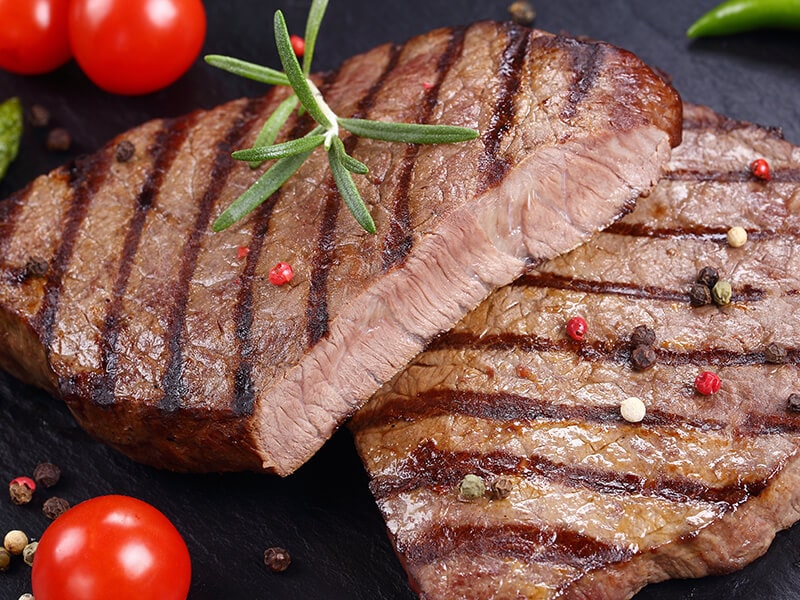
Well-Done
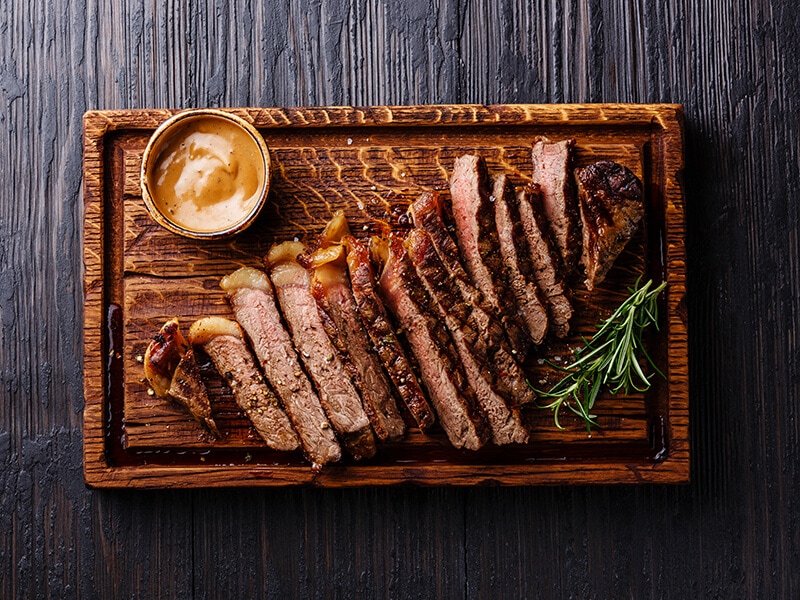
Though well-done steak is the safest option, it features a chewy and drier texture. Therefore, well-done steak is often seared on low heat to avoid toughening. The meat is cooked through and has no pink or reddish color, both on the outside and inside.
A well-done steak is completely brown and feels quite firm to touch. For the fans of rare or medium steaks, I don’t recommend cooking meat to a well-done level as it deprives most of the meat’s beefy flavor and tasty juice.
Still, it’s fine to choose a well-done steak if you enjoy its taste or want to avoid the raw and undercooked meat texture.
Take a look at the appearance and texture of every steak doneness level.
Medium Vs. Medium-Rare: Which Method Should You Choose?
From the brief description and the steak doneness chart, it’s obvious that medium and medium-rare steaks feature distinct characteristics regarding their flavors and textures. While both steak doneness tastes delicious, they are not everyone’s favorite option.
There are a lot of characteristics you have to consider when comparing medium and medium-rare steaks. All these aspects of the two categories will come to light in the following sections. Keep reading, and I will show you everything.
How I Compare The Two Steak Doneness Levels
Picking a better steak doneness would be biased since it depends mainly on personal taste, preference, and conditions. Therefore, I will discuss the two type’s flavors and looks in detail to help you pick your preferred doneness.
In addition, different steak cuts, like sirloin, ribeye, T-bone, or porterhouse, vary in fat content, taste, and texture. Each cut will deliver a better taste when cooked at a suitable temperature.
Some steak cuts are simply not ideal for medium or medium-rare, and they will taste bad regardless of your cooking skills. Therefore, you must consider what ingredients and meat you have before choosing a suitable cooking method.
Another critical aspect is the steak’s safety and nutrient content. When comparing medium-rare and rare steak, you would want to ask questions like: Is medium-rare healthier than medium-rare? Which steak is generally safer to eat?
I will give you reasonable and detailed answers on all of these topics. Now, let’s briefly examine the two doneness levels’ core differences.
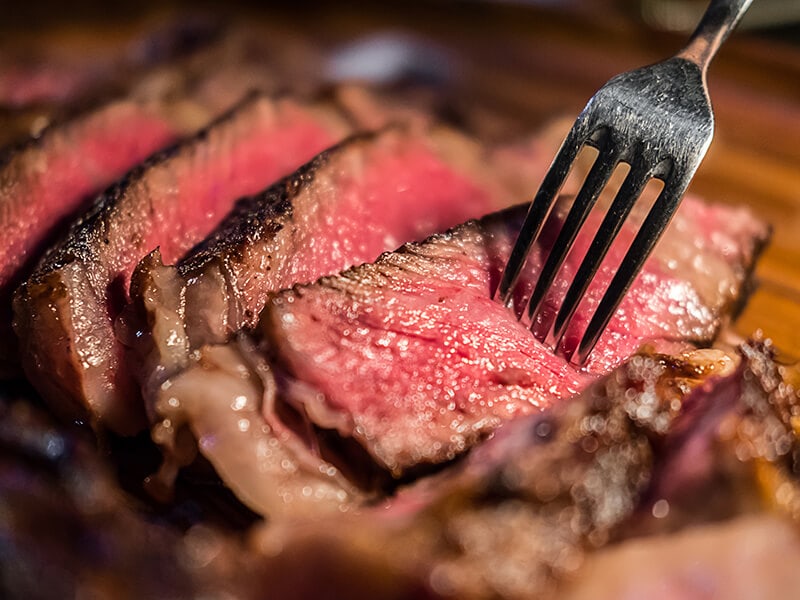
Types Of Meat
Any cut of beef can be cooked to medium and medium-rare, but you have to choose suitable parts of the cow. According to the chefs, nearly all types of beef are excellent for making medium-rare steak.
Medium-Rare
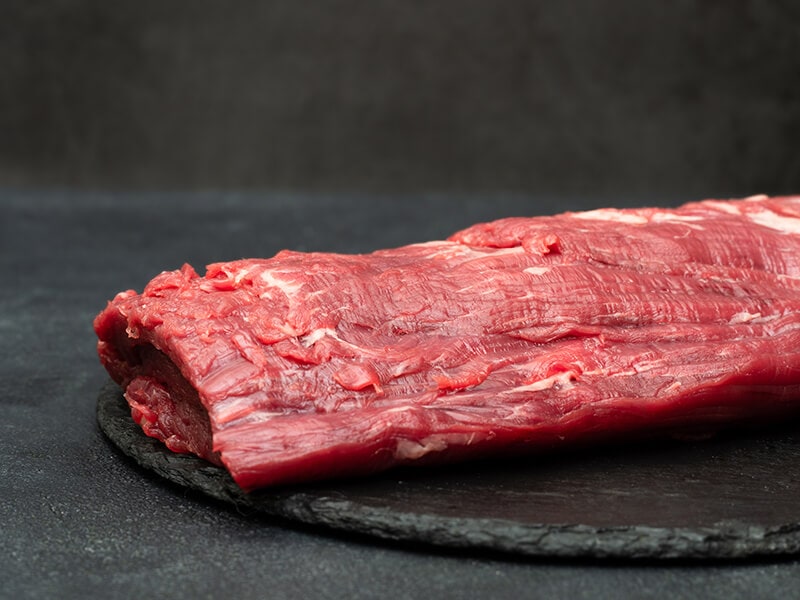
However, a medium-rare steak delivers its natural taste in the undercooked inner texture, so you should choose the cuts with a really powerful and tasty beefy flavor. In addition, medium-rare steaks require a shorter cooking time, thus melting less fat of the cut.
Therefore, prioritizing flavorful cuts of meat with low-fat content and a leaner texture is advisable. Some ideal choices that meet these criteria are the tenderloin, sirloin tip, and rib eye.
These cuts are one of the most flavorful parts with less marbling and a significantly lower fat content, making an ideal ingredient for a delicious medium-rare steak.
Medium
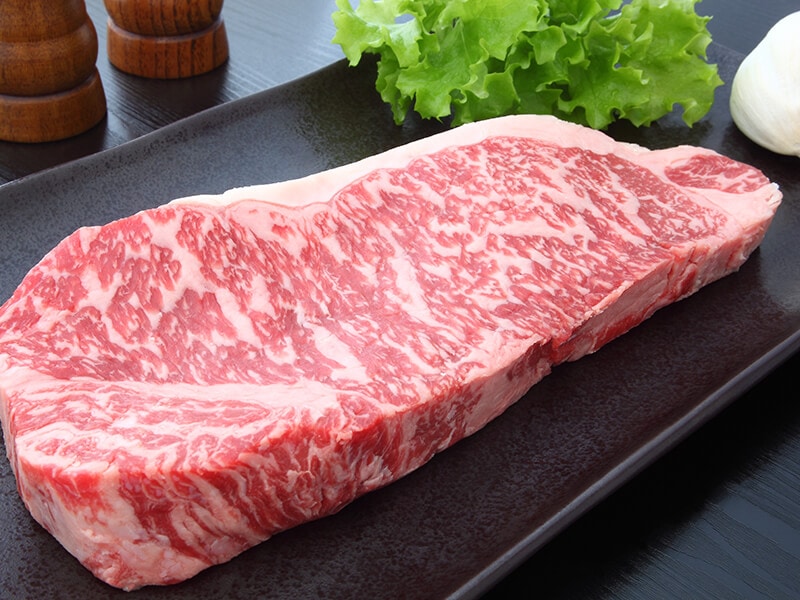
On the other hand, medium steaks are cooked for longer, thus burning more fat in their texture. Not to mention, the longer cooking time burns more meat juice, making it tougher, drier, and chewier.(1)
Therefore, you should not use lean and low-fat cuts like tenderloin or rib eye because the steak will become dried and chewy. I recommend using the cuts with a more tender texture and higher fat content to make a juicy, melt-in-the-mouth medium steak.
Some excellent options are T-bone, porterhouse, and premium cuts like Wagyu or Kobe beef. These cuts possess a tender and juicy texture, plus the satisfying beefy flavors that any diner will love.
Discover more about Wagyu beef, one of the best ingredients for medium steak.
Appearance
A perfect medium-rare steak should have a pinky texture (plus some reddish hints) in the center while the outer sides are brown. The steak’s inner texture is slightly pinkier than uncooked meat, but it still looks raw.
A properly cooked medium steak is only pink for around 25% of its inner. medium-rare steak is not raw, but its inner undercooked meat texture and reddish hints may make you uncomfortable.
Meanwhile, you will no longer see the raw and reddish hints when cutting a medium steak. It features a slightly pink interior that looks like undercooked meat. Regarding its outer sides, the steak is more browned and charred due to the longer cooking time.
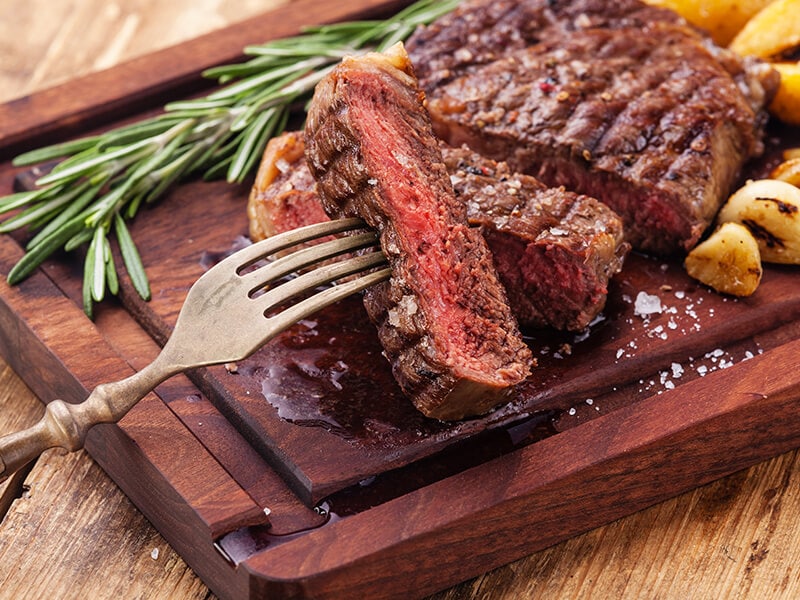
Texture
As the outer is seared briefly, and the heat doesn’t fully penetrate the steak’s center, a medium-rare steak features a firm texture on the outside and a soft, tender inner meat. Its center is not fully cooked and feels slightly warm when touched with your finger.
Since the heat has more time to melt down the meat’s fat, a medium steak is less juicy and tougher when put in your mouth. For these reasons, medium-rare doneness is ideal if you prefer a tender, buttery, and melt-in-the-mouth steak.
On the other hand, a medium steak is slightly chewier, but the difference is not significant. Though medium-rare steak is more satisfying to chew, I recommend you go for medium steak if you don’t like raw or undercooked meat.
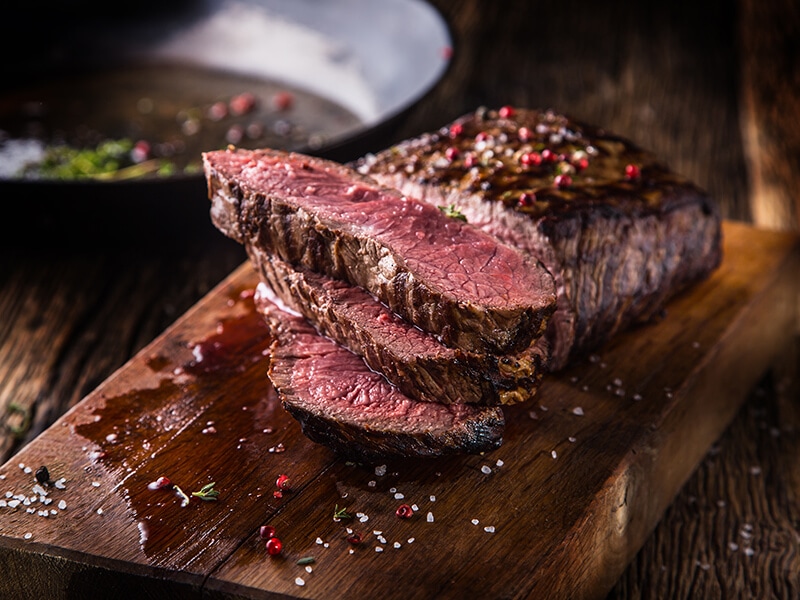
Flavor
As mentioned above, the longer you cook a steak, the less juicy and tender it gets. When the meat’s muscles are burnt more thoroughly, they will toughen and make the steak chewier. The cooking time will affect the flavors of medium and medium-rare steak significantly.
Medium-Rare
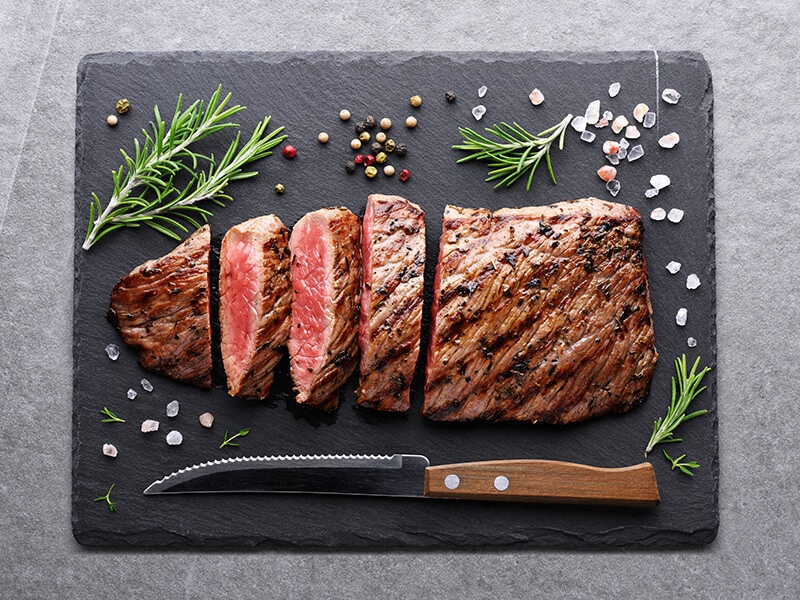
In addition, all the juices are cooked out and leave you with a drier texture, which means less appetizing. Therefore, medium-rare steak is definitely more delicious if you prefer a tender, juicy, and moist steak.
Medium
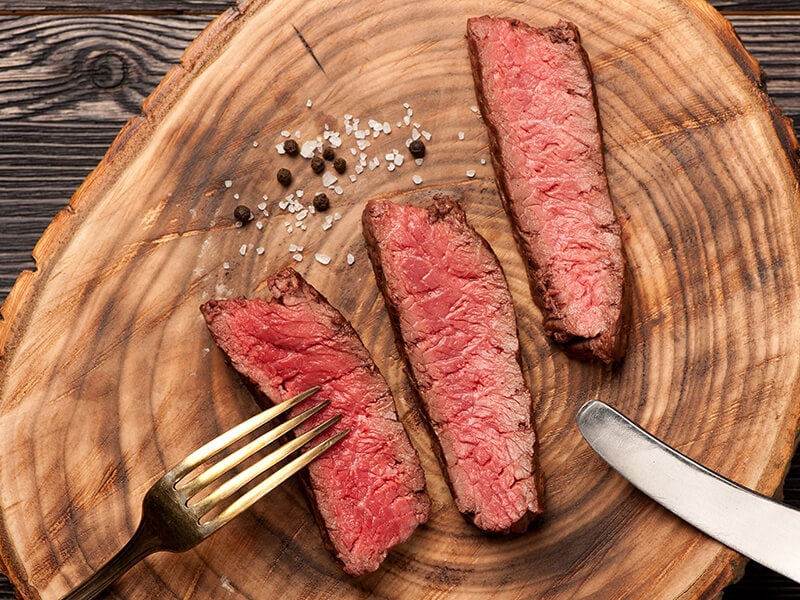
In addition, many steak lovers and chefs have asserted that medium-rare steaks feature a more powerful and natural beefy flavor. Since the meat juice contributes significantly to the steak’s flavor, a medium steak would feel less satisfying to taste.
For these reasons, medium-rare steak tastes better than medium steak.
Easy To Prepare
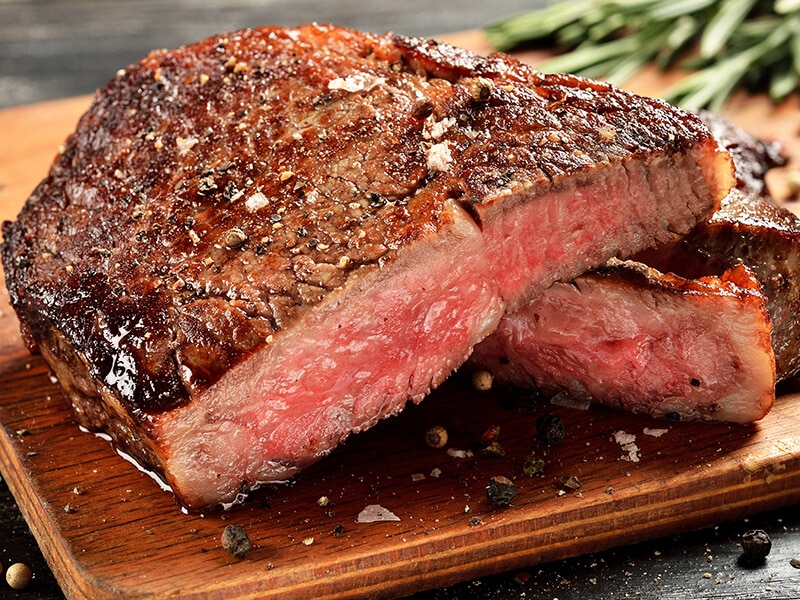
I will walk you through the detailed instructions for preparing medium and medium-rare steak in the following sections. However, both steaks require decent cooking skills and a food thermal thermometer to achieve a perfect texture and temperature.
The main difference between cooking a medium and medium-rare steak is the cooking time and inner temperature. Medium steaks are commonly seared for one or two minutes longer on the first side compared to medium-rare dishes.
In addition, it’s nearly impossible to check the inner temperature of the steak without a thermometer, especially for people with entry-level cooking skills. Therefore, it’s not more convenient and easier to prepare a medium steak than a medium-rare and vice versa.
However, you need to be extra careful when making medium-rare steak. Slightly wrong timing can easily lead to a raw and undercooked meat texture, which is unsafe for consumption.
A full course about how to cook a beautiful medium-rare roast beef for you!
The Safety Of Medium And Medium-Rare Steaks
The main reason people avoid undercooked food is the fear of unkilled bacteria living on the food’s surface. According to research, red meat contains bacteria like E.coli, Salmonella, Listeria, and Campylobacter that can lead to food poisoning. (2)
These bacteria will get eliminated when you prepare and cook the meat correctly to an ideal temperature of 160°F. For these reasons, both medium and medium-rare steaks still carry some potential risks of food contamination and bacterial infection.
While the outer texture is fully cooked and seared, the heat cannot fully penetrate the meat’s inner texture and kill the bacteria living in its center when cooking medium-rare or medium steak.
Though the slightly longer cooking time and higher temperature of medium steaks may be a little safer, it still poses the risk of bacterial infection if you use a low-quality and badly preserved cut.
For these reasons, it’s not reasonable to assume that medium steaks are safer than medium steaks and vice versa. The key is using a really fresh and high-quality steak provided by reliable sources to reduce the risk of bacterial infection and food poisoning.
However, consuming undercooked meat like medium-rare steak is not generally advisable. If you are making steak for children, older people, or patients with a weak immune system, cook the steak to medium or well-done to ensure the food’s safety.
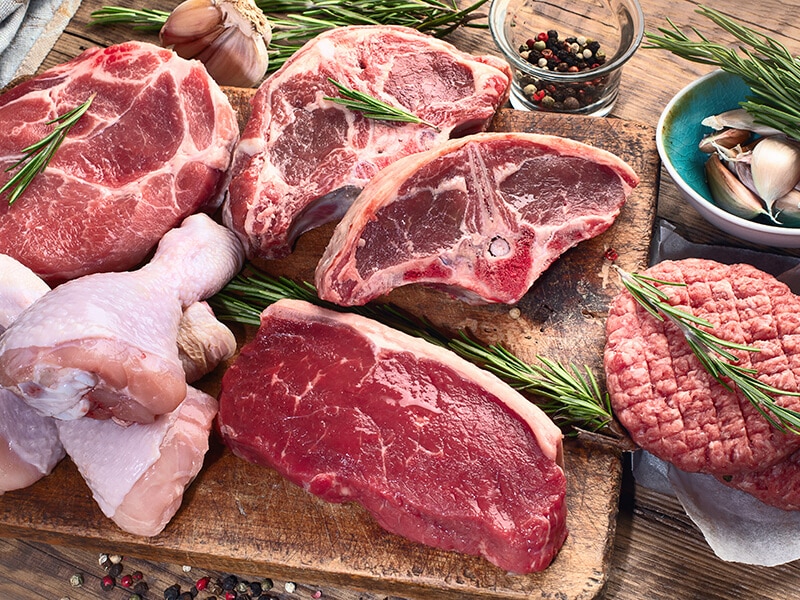
The Only Guide You Need For Cooking Medium-Rare Steak
There’s no need to attend five-star eateries to enjoy the tastiest medium and medium-rare steaks. The instructions and cooking tips below will help you prepare the most delicious steak with perfect flavors, tenderness, and doneness.
Tips To Ensure The Highest Meat Quality Before Cooking
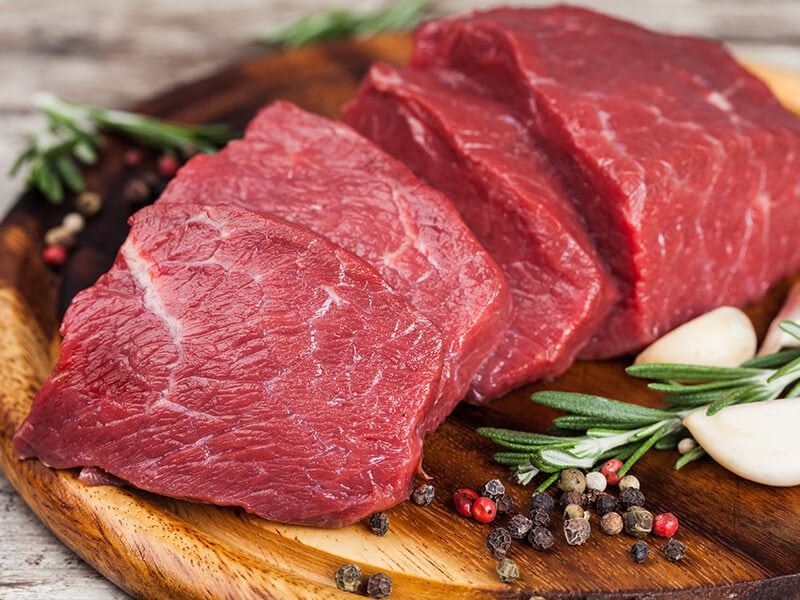
Many inexperienced cooks usually take the meat out of the fridge and put it straight on the hot pan, which can quickly ruin the steak’s textures and flavors. If you freeze the meat, ensure to thaw it for one day before cooking.
However, you must keep the steak chilled so bacteria cannot develop in the thawing process. To thaw the steak, place it in a water-tight bag and submerge it fully in cold water.
Remember to change the water occasionally when it starts to warm up. After the meat is defrosted, cook it immediately to retain the best flavors and quality.
If you just store the meat in the fridge, take the steak out and let it rest at room temperature for 15 to 20 minutes. Ensure that all meat parts are cooked evenly to avoid overcooking one side while the other side of the steak is still raw.
If you are not a fan of fat or following a diet, use a knife to cut excessive fatty tissues on the steak. However, fat will make your steak juicier and more tender, so it’s best to keep the fatty parts when cooking.
The Best Way To Season Steak
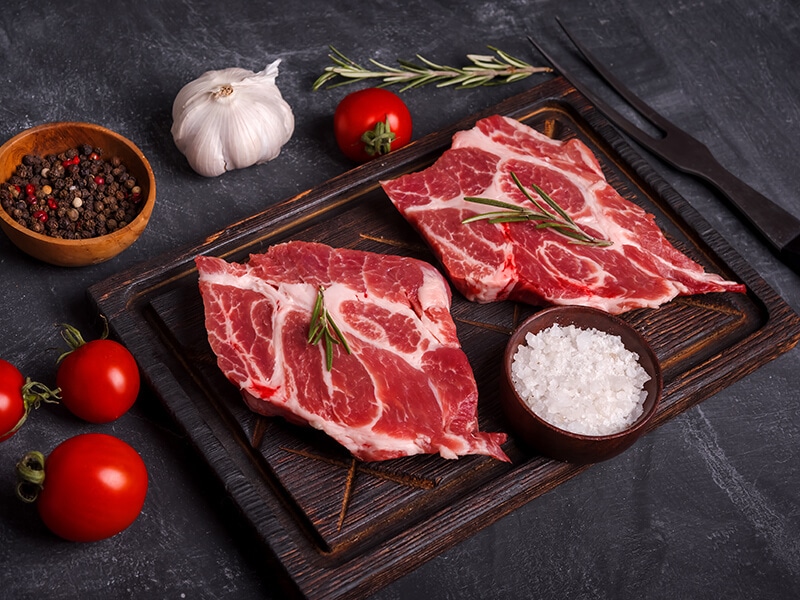
The best seasoning material for steaks is salt and pepper, whether it’s medium-rare, medium, or any steak doneness level. This classic combo brings a savory flavor and fabulous aroma that can please any meat lover.
If you prefer a more complex flavor, consider adding spices and herbs like butter, milk, garlic, or rosemary. But the simple savory taste of the salt and pepper duo will always make the best steak.
You should apply the seasonings right before you cook the steak. One pound of meat will need 4 grams of salt and pepper mixture (around ¾ tablespoons). Remember to rub the mixture evenly so the meat texture can fully absorb the flavors.
You can also marinate the steak for 12 hours before cooking to give it a deeper flavor and higher tenderness. Some ideal marinating mixture ingredients are red wine, balsamic vinegar, spices, and herbs.
To marinate a steak, put it in a plastic bag or food container and pour in the marinating texture. Shake the bag to mix the mixture thoroughly and put it in the fridge for 12 hours before cooking.
You can add marinated or spice-rubbed meat straight to the pan without drying it. However, you have to pat the plain meat to dry using a kitchen towel before drizzling it with olive oil, sea salt flakes, and black peppers.
Don’t rush to season your steak without checking out this instruction!
What You Need For Cooking Medium And Medium-Rare Steak
You can use a stovetop, oven, or frying pan to make a steak. However, the most convenient choice for me is a large skillet, which can cook and sear the steak’s texture evenly in a short time.
In addition, you should decide on your favorite doneness before choosing the best ingredient. For medium steak, prioritize tender and fatty cuts like porterhouse, T-bone, and New York strip steak (around one inch thick).
To make medium-rare steak, choose lean and low-fat ingredients like tenderloin, rib eye, or sirloin tip. Also, prepare a food thermometer to check the steak’s doneness after cooking.
Steps To Cook A Perfect Medium And Medium-Rare Steak
The steps for making medium-rare and medium steaks are pretty identical, except that medium steak requires a bit longer cooking time. After defrosting and seasoning the meat, follow the steps below to make your perfect steak.
Step 1: Heat Up
Put your skillet or stovetop on medium heat and spray it with cooking oil or a spoonful of butter. If you use frying pans, cook the steak in batches or use two pans to cook many steaks.
Step 2: Sear The Steak
When the oil is hot, gently place on the steak to sear for 5 minutes on the first side to make it medium-rare. If you prefer medium steak, sear for one minute longer.
Step 3: Flip To The Other Side
When the meat texture has turned brown, turn to the other side and sear for another four minutes. Use your spoon to scoop the hot oil and pour it on the steak texture evenly.
Step 4: Check The Steak’s Doneness
When the steak is nearly done, use a food thermal thermometer to check its inner temperature. A medium-rare steak’s center should register 52ºC / 125ºF, while 58ºC / 136ºF is the ideal temperature for medium.
Step 5: Rest And Serve
When your target temperature is met, remove the steak from the heat and let it rest on the plate for 10 minutes before slicing and serving. You can serve the steak with more spices or sauces to enhance its flavors.
Discover the chef’s secrets for cooking the most delicious steak!
Helpful Tips For Cooking Medium And Medium-Rare Steaks
The most common mistake many people make is putting the steak in when the heat isn’t hot enough. Even if you follow the correct cooking time, your steak will become undercooked with a lousy texture and flavor.
Therefore, always wait for the oil to get hot before searing the steak. In addition, don’t overseason your steak with too much sauce or spices. When using salt and pepper, rub them in a small ratio (¾ tablespoon for one pound of meat).
Lastly, always allow the steak resting time (10 minutes or more) before you slice and serve it. This resting time allows the juice and heat to spread evenly in the meat’ texture, making it more tender and flavorful.
Slicing too early can expose your steak’s center to fresh air and reduce its tastiness. In addition, it will decrease the warmness of the steak and make it drier, thus becoming less satisfying to chew.
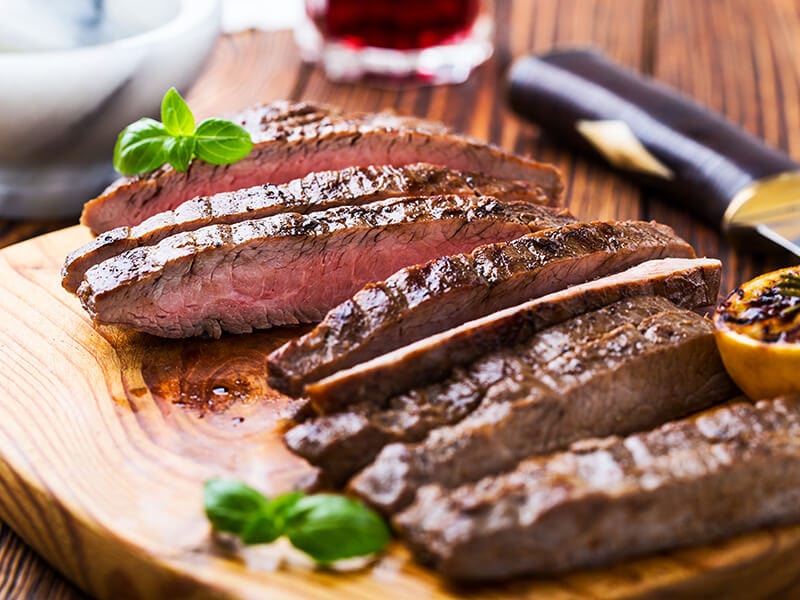
FAQs
If you still have unresolved questions on medium and medium-rare steak doneness, check out the sections below to discover more useful information.
Medium Vs. Medium-Rare Steak: It’s Up To Your Taste
So, medium vs. medium-rare: which is the better option? To choose between these two doneness levels, you have to consider what flavors and textures of the steak you like more and the type of meat you want to enjoy.
In summary, choose medium-rare if you prefer a tender and juicy steak with a natural beefy flavor. Meanwhile, medium doneness is more suitable for those preferring a well-cooked steak and don’t like the raw flavors and texture of meat.
I hope the comparisons and details provided can help you decide now. If you have different opinions about any point, please comment and share your ideas. Don’t hesitate to share the post and give me a thumbs up if you enjoy its content. I wish you a nice day!
References
- Exploratorium.edu. What Makes Meat Juicy And Tender.
- Foodauthority.nsw.gov. Raw Meat Safe Eating.

